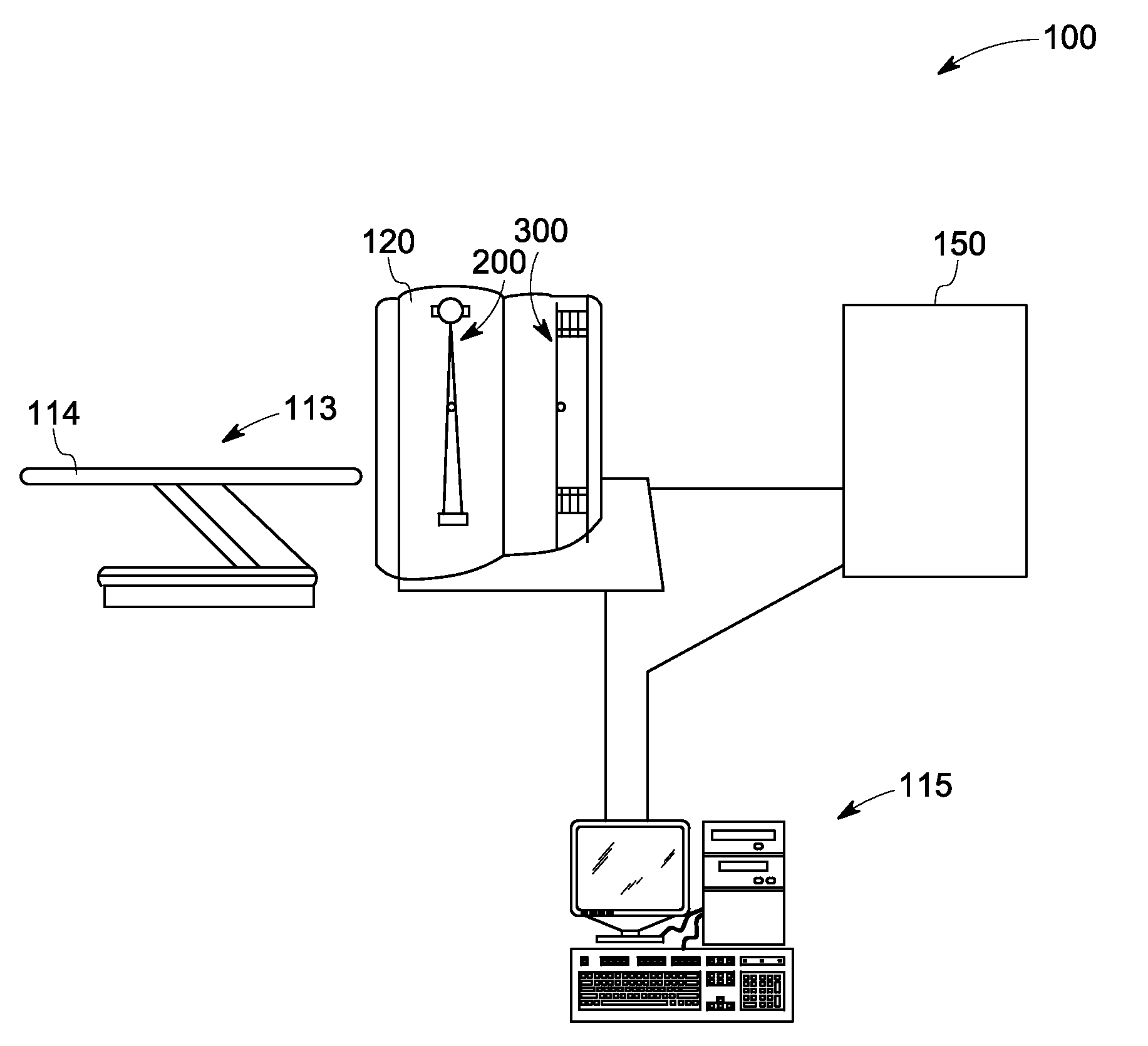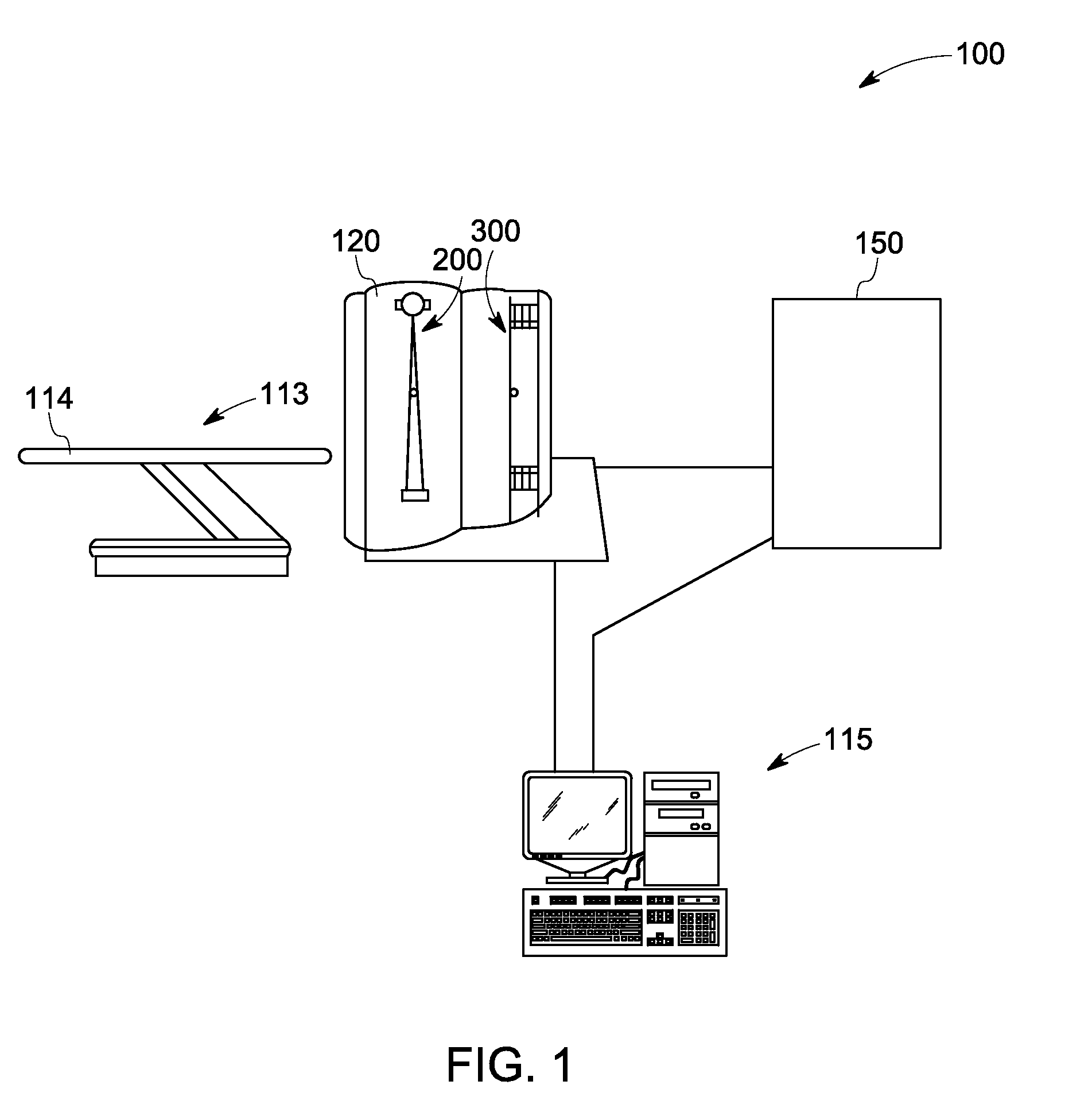Motion correction in tomographic images
a motion correction and tomographic imaging technology, applied in the field of tomographic imaging, can solve the problems of inaccurate attenuation correction, pet imaging does not generally provide structural details as well as other types of scanners, and is not particularly sensitive to biological processes and functions, so as to enhance the quantitative accuracy of tomographic imaging and reduce motion blur without increasing image noise
- Summary
- Abstract
- Description
- Claims
- Application Information
AI Technical Summary
Benefits of technology
Problems solved by technology
Method used
Image
Examples
Embodiment Construction
[0020]Embodiments disclosed herein include an imaging method for providing motion correction in tomographic imaging. The method initially reconstructs respiratory-gated PET and CT images for a region of interest. Patient motion during PET scanning leads to a mismatch in PET and CT images. This mismatch is adjusted between corresponding gated PET and CT images. The mismatch adjustment is performed in PET images to correct motion in the region of interest. An attenuation mismatch correction is then applied to the gated PET images. The gated PET images are then registered. The resulting image is therefore a local motion corrected image. As used herein, singular forms such as “a,”“an,” and “the” include plural referents unless the context clearly dictates otherwise.
[0021]FIG. 1 illustrates an exemplary embodiment of a PET-CT scanner 100. The PET-CT scanner 100 may include a CT system 200 and a PET system 300 mounted around a bore in a housing 120. The PET-CT scanner 100 may also include...
PUM
 Login to View More
Login to View More Abstract
Description
Claims
Application Information
 Login to View More
Login to View More - R&D
- Intellectual Property
- Life Sciences
- Materials
- Tech Scout
- Unparalleled Data Quality
- Higher Quality Content
- 60% Fewer Hallucinations
Browse by: Latest US Patents, China's latest patents, Technical Efficacy Thesaurus, Application Domain, Technology Topic, Popular Technical Reports.
© 2025 PatSnap. All rights reserved.Legal|Privacy policy|Modern Slavery Act Transparency Statement|Sitemap|About US| Contact US: help@patsnap.com



